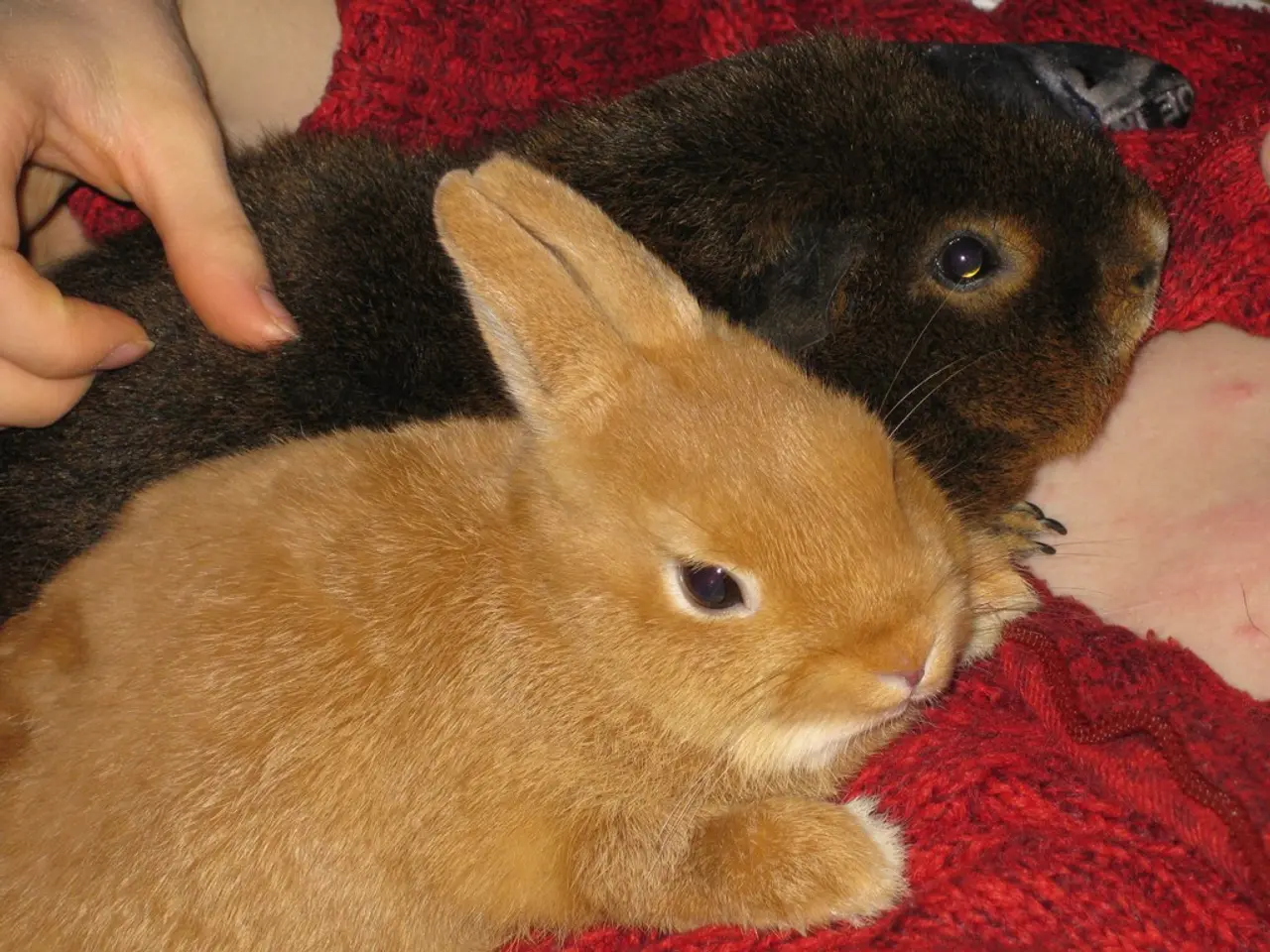Interpreting the hidden messages in a rabbit's physical posture
In the enchanting world of our furry friends, the rabbit, understanding their behaviour can provide a glimpse into their happiness or distress. Here's a guide to help you decipher the signs.
A contented rabbit is often a curious one, eagerly exploring its surroundings, engaging with toys, and showing interest in its owner. One of the most joyful displays of a happy bunny is the binky - a half-twist when a rabbit jumps off the ground mid-run, a clear indication of excitement and joy. Some rabbits may even do a mini version of a binky, twisting their head and shoulders slightly as they run and shaking their ears.
On the other hand, a rabbit in distress may exhibit quite different behaviours. Thumping hind legs, a sign of high alert, stress, or anxiety, is a red flag. Loud teeth grinding, often accompanied by a hunched posture and refusal to eat, indicates pain. Distressed rabbits may also avoid social interaction or hide more than usual.
However, it's important to note that rabbits, being prey animals, often hide illness until symptoms are severe. Therefore, daily monitoring of behaviour and physical signs is crucial. Signs that warrant prompt veterinary attention include loss of appetite, changes in eating habits, little to no feces or diarrhea, sitting in a hunched position, abnormal gut sounds, eye abnormalities, changes in litter box use, and sudden behavioural changes.
A rabbit's appetite is a key indicator of its health. A happy rabbit will have a good appetite and spend plenty of time each day happily munching its hay. Conversely, an unwell rabbit tends to become subdued and may be eating less.
It's also essential to understand that rabbits can display signs of aggression. An angry or distressed rabbit may run away with flattened ears and back feet flicking. A worried rabbit may sit in a crouched position with tense muscles and flattened ears. Rabbits can also display signs of aggression, such as sitting on their hind legs in a boxing-style stance.
However, the joyful side of a rabbit is equally captivating. Happy rabbits can be seen running in circles at high speeds, known as practicing their version of the zoomies. These bursts of energy are a clear sign of joy and happiness.
In conclusion, understanding the signs of a happy rabbit and a distressed one is crucial for providing the best care possible. By recognising these signs, we can ensure our beloved pets live happy, healthy lives. This guide is based on a popular reference book for rabbit owners worldwide, providing valuable insights into the world of our fluffy companions.
- In the realm of home-and-garden pets, observing a cat's behavior can be an essential key to gauging its health and wellbeing, just like understanding a rabbit's behavior is critical for assessing its happiness or distress.
- A contented cat is typically playful, often found engaging with toys and exhibiting interest in its owner, similar to the curious, toy-interested bunny.
- Signs of a happy cat can include the cat purring, rubbing against its owner, or playfully batting at toys, much like a rabbit's binky or zoomies display joy and excitement.
- Conversely, a distressed cat may show signs such as excessive grooming, hiding more often, or changes in appetite, behaviors that are also seen in unsettled rabbits.
- It's important to note that cats, like rabbits, often hide illness until symptoms are severe, making daily monitoring of behavior and physical signs crucial in ensuring early veterinary intervention when necessary.
- Understanding the signs of a healthy, happy cat is vital for providing appropriate care and lifestyle at home, much like the guide for rabbits helps rabbit owners worldwide ensure their fluffy friends live long, contented lives.




